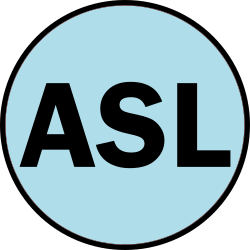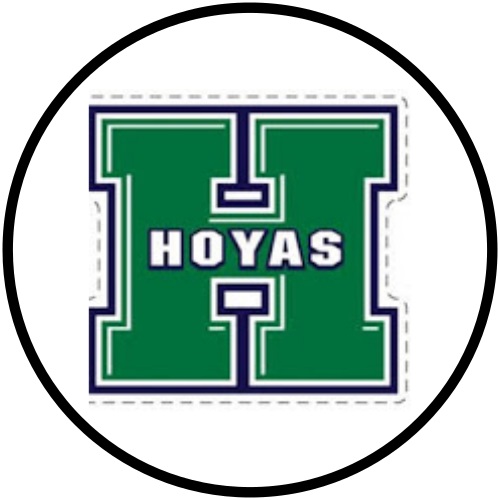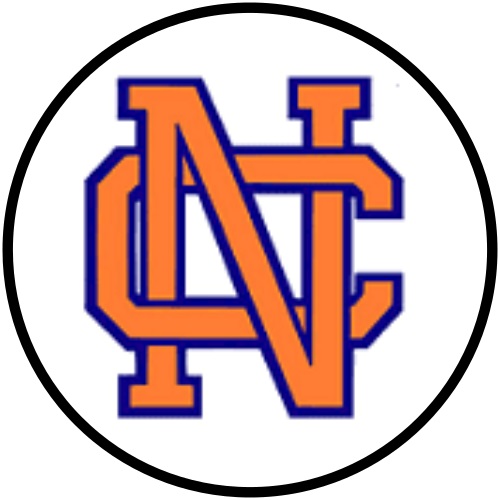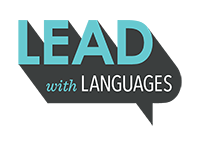Cobb County World Language Programs
Teacher Quick Links
Programs by Language
Click HERE to access the list individual language programs as well as specific language program information.

Language Programs by Level
Bilingual and Specialized Programs
The programs below are exclusive to each school. Click over each item to find additional information.
- Dual Language Immersion**
- Globalization Academy at Pope High School
- International Baccalaureate at Campbell High School
- International Spanish Academy at Walton High School
- International Spanish Language Academy at Sprayberry High School
- International Studies at North Cobb High School
Seals
Cobb County School District the following Georgia Department of Education World Language Seals:
| Georgia Seal of Biliteracy |
International Skills Diploma Seal |
* Not all programs are available at all schools, please check with your local school for details.
** The selection of target language on Dual Language Immersion programs is a local school decision based on community input.
At the Intermediate level, listeners can understand information conveyed in simple, sentence-length speech on familiar or everyday topics. They are generally able to comprehend one utterance at a time while engaged in face-to-face conversations or in routine listening tasks such as understanding highly contextualized messages, straightforward announcements, or simple instructions and directions. Listeners rely heavily on redundancy, restatement, paraphrasing, and contextual clues.
Intermediate-level listeners understand speech that conveys basic information. This speech is simple, minimally connected, and contains high-frequency vocabulary.
Intermediate-level listeners are most accurate in their comprehension when getting meaning from simple, straightforward speech. They are able to comprehend messages found in highly familiar everyday contexts. Intermediate listeners require a controlled listening environment where they hear what they may expect to hear.
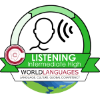 Intermediate High
Intermediate High
At the Intermediate High sublevel, listeners are able to understand, with ease and confidence, simple sentence-length speech in basic personal and social contexts. They can derive substantial meaning from some connected texts typically understood by Advanced-level listeners although there often will be gaps in understanding due to a limited knowledge of the vocabulary and structures of the spoken language.
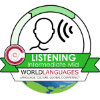 Intermediate Mid
Intermediate Mid
At the Intermediate Mid sublevel, listeners are able to understand simple, sentence-length speech, one utterance at a time, in a variety of basic personal and social contexts. Comprehension is most often accurate with highly familiar and predictable topics although a few misunderstandings may occur. Intermediate Mid listeners may get some meaning from oral texts typically understood by Advanced-level listeners.
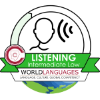 Intermediate Low
Intermediate Low
At the Intermediate Low sublevel, listeners are able to understand some information from sentence-length speech, one utterance at a time, in basic personal and social contexts, though comprehension is often uneven. At the Intermediate Low sublevel, listeners show little or no comprehension of oral texts typically understood by Advanced-level listeners.
For additional information go to
ACTFL PROFICIENCY GUIDELINES 2012
- Details
- Category: Language Proficiency
- Hits: 9281
At the Novice level, listeners can understand key words, true aural cognates, and formulaic expressions that are highly contextualized and highly predictable, such as those found in introductions and basic courtesies.
Novice-level listeners understand words and phrases from simple questions, statements, and high-frequency commands. They typically require repetition, rephrasing, and/or a slowed rate of speech for comprehension. They rely heavily on extralinguistic support to derive meaning.
Novice-level listeners are most accurate when they are able to recognize speech that they can anticipate. In this way, these listeners tend to recognize rather than truly comprehend. Their listening is largely dependent on factors other than the message itself.
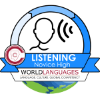 Novice High
Novice High
At the Novice High sublevel, listeners are often but not always able to understand information from sentence-length speech, one utterance at a time, in basic personal and social contexts where there is contextual or extralinguistic support, though comprehension may often be very uneven. They are able to understand speech dealing with areas of practical need such as highly standardized messages, phrases, or instructions, if the vocabulary has been learned.
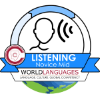 Novice Mid
Novice Mid
At the Novice Mid sublevel, listeners can recognize and begin to understand a number of high-frequency, highly contextualized words and phrases including aural cognates and borrowed words. Typically, they understand little more than one phrase at a time, and repetition may be required.
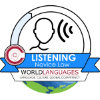 Novice Low
Novice Low
At the Novice Low sublevel, listeners are able occasionally to recognize isolated words or very high-frequency phrases when those are strongly supported by context. These listeners show virtually no comprehension of any kind of spoken message, not even within the most basic personal and social contexts.
For additional information go to
ACTFL PROFICIENCY GUIDELINES 2012
- Details
- Category: Language Proficiency
- Hits: 9577
At the Advanced level, readers can understand the main idea and supporting details of authentic narrative and descriptive texts. Readers are able to compensate for limitations in their lexical and structural knowledge by using contextual clues. Comprehension is likewise supported by knowledge of the conventions of the language (e.g., noun/adjective agreement, verb placement, etc.). When familiar with the subject matter, Advanced-level readers are also able to derive some meaning from straightforward argumentative texts (e.g., recognizing the main argument).
Advanced-level readers are able to understand texts that have a clear and predictable structure. For the most part, the prose is uncomplicated and the subject matter pertains to real-world topics of general interest.
Advanced-level readers demonstrate an independence in their ability to read subject matter that is new to them. They have sufficient control of standard linguistic conventions to understand sequencing, time frames, and chronology. However, these readers are likely challenged by texts in which issues are treated abstractly.
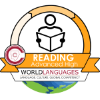 Advanced High
Advanced High
At the Advanced High sublevel, readers are able to understand, fully and with ease, conventional narrative and descriptive texts of any length as well as more complex factual material. They are able to follow some of the essential points of argumentative texts in areas of special interest or knowledge. In addition, they are able to understand parts of texts that deal with unfamiliar topics or situations. These readers are able to go beyond comprehension of the facts in a text, and to begin to recognize author-intended inferences. An emerging awareness of the aesthetic properties of language and of its literary styles permits comprehension of a wide variety of texts. Misunderstandings may occur when reading texts that are structurally and/or conceptually more complex.
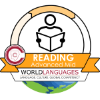 Advanced Mid
Advanced Mid
At the Advanced Mid sublevel, readers are able to understand conventional narrative and descriptive texts, such as expanded descriptions of persons, places, and things and narrations about past, present, and future events. These texts reflect the standard linguistic conventions of the written form of the language in such a way that readers can predict what they are going to read. Readers understand the main ideas, facts, and many supporting details. Comprehension derives not only from situational and subject-matter knowledge but also from knowledge of the language itself. Readers at this level may derive some meaning from texts that are structurally and/or conceptually more complex.
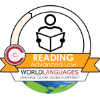 Advanced Low
Advanced Low
At the Advanced Low sublevel, readers are able to understand conventional narrative and descriptive texts with a clear underlying structure though their comprehension may be uneven. These texts predominantly contain high-frequency vocabulary and structures. Readers understand the main ideas and some supporting details. Comprehension may often derive primarily from situational and subject-matter knowledge. Readers at this level will be challenged to comprehend more complex texts.
For additional information go to
ACTFL PROFICIENCY GUIDELINES 2012
- Details
- Category: Language Proficiency
- Hits: 8828
At the Intermediate level, readers can understand information conveyed in simple, predictable, loosely connected texts. Readers rely heavily on contextual clues. They can most easily understand information if the format of the text is familiar, such as in a weather report or a social announcement.
Intermediate-level readers are able to understand texts that convey basic information such as that found in announcements, notices, and online bulletin boards and forums. These texts are not complex and have a predictable pattern of presentation. The discourse is minimally connected and primarily organized in individual sentences and strings of sentences containing predominantly high frequency vocabulary.
Intermediate-level readers are most accurate when getting meaning from simple, straightforward texts. They are able to understand messages found in highly familiar, everyday contexts. At this level, readers may not fully understand texts that are detailed or those texts in which knowledge of language structures is essential in order to understand sequencing, time frame, and chronology.
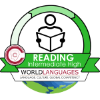 Intermediate High
Intermediate High
At the Intermediate High sublevel, readers are able to understand fully and with ease short, non-complex texts that convey basic information and deal with personal and social topics to which the reader brings personal interest or knowledge. These readers are also able to understand some connected texts featuring description and narration although there will be occasional gaps in understanding due to a limited knowledge of the vocabulary, structures, and writing conventions of the language.
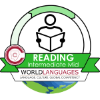 Intermediate Mid
Intermediate Mid
At the Intermediate Mid sublevel, readers are able to understand short, non-complex texts that convey basic information and deal with basic personal and social topics to which the reader brings personal interest or knowledge, although some misunderstandings may occur. Readers at this level may get some meaning from short connected texts featuring description and narration, dealing with familiar topics.
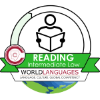 Intermediate Low
Intermediate Low
At the Intermediate Low sublevel, readers are able to understand some information from the simplest connected texts dealing with a limited number of personal and social needs, although there may be frequent misunderstandings. Readers at this level will be challenged to derive meaning from connected texts of any length.
For additional information go to
ACTFL PROFICIENCY GUIDELINES 2012
- Details
- Category: Language Proficiency
- Hits: 9334
At the Advanced level, listeners can understand the main ideas and most supporting details in connected discourse on a variety of general interest topics, such as news stories, explanations, instructions, anecdotes, or travelogue descriptions. Listeners are able to compensate for limitations in their lexical and structural control of the language by using real-world knowledge and contextual clues. Listeners may also derive some meaning from oral texts at higher levels if they possess significant familiarity with the topic or context.
Advanced-level listeners understand speech that is authentic and connected. This speech is lexically and structurally uncomplicated. The discourse is straightforward and is generally organized in a clear and predictable way
Advanced-level listeners demonstrate the ability to comprehend language on a range of topics of general interest. They have sufficient knowledge of language structure to understand basic time-frame references. Nevertheless, their understanding is most often limited to concrete, conventional discourse.
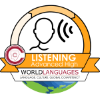 Advanced High
Advanced High
At the Advanced High sublevel, listeners are able to understand, with ease and confidence, conventional narrative and descriptive texts of any length as well as complex factual material such as summaries or reports. They are typically able to follow some of the essential points of more complex or argumentative speech in areas of special interest or knowledge. In addition, they are able to derive some meaning from oral texts that deal with unfamiliar topics or situations. At the Advanced High sublevel, listeners are able to comprehend the facts presented in oral discourse and are often able to recognize speaker-intended inferences. Nevertheless, there are likely to be gaps in comprehension of complex texts dealing with issues treated abstractly that are typically understood by Superior-level listeners.
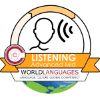 Advanced Mid
Advanced Mid
At the Advanced Mid sublevel, listeners are able to understand conventional narrative and descriptive texts, such as expanded descriptions of persons, places, and things, and narrations about past, present, and future events. The speech is predominantly in familiar target-language patterns. Listeners understand the main facts and many supporting details. Comprehension derives not only from situational and subject-matter knowledge, but also from an increasing overall facility with the language itself.
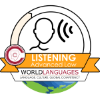 Advanced Low
Advanced Low
At the Advanced Low sublevel, listeners are able to understand short conventional narrative and descriptive texts with a clear underlying structure though their comprehension may be uneven. The listener understands the main facts and some supporting details. Comprehension may often derive primarily from situational and subject-matter knowledge.
For additional information go to
ACTFL PROFICIENCY GUIDELINES 2012
- Details
- Category: Language Proficiency
- Hits: 9140
Subcategories
Arabic
Arabic Language Program
The Cobb County Arabic program offers the following courses:
- Levels I-IV
*Not all schools offer all the course levels or languages, please check with your local school for a list of current course offerings.
Why should you learn Arabic?
Visit the Lead with Languages site and learn more about the benefits of learning Arabic and other languages.
Click HERE to learn more about the languages offered at Cobb County Schools.
Chinese
Chinese Language Program
The Cobb County Chinese program offers the following courses:
- Levels I-V
- AP Chinese Language and Culture
*Not all schools offer all the course levels or languages, please check with your local school for a list of current course offerings.
Why should you learn Chinese?
Visit the Lead with Languages site and learn more about the benefits of learning Chinese and other languages.
Click HERE to learn more about the languages offered at Cobb County Schools.
French
French Language Program
Visit the Lead with Languages site and learn more about the benefits of learning French and other languages.
Click HERE to learn more about the languages offered at Cobb County Schools.
The Cobb County French program offers the following courses:
- Levels I-VIII
- AP Language & Culture
*Not all schools offer all the course levels or languages, please check with your local school for a list of current course offerings.
** Teacher Log-in is required to access some of the resources below:
| Course Profile |
Proficiency Targets |
Instructional Resources |
Click on the links below for additional resources:
- Teacher Resources (log in required)
- Student Textbook Resources
- Online resources
German
German Language Program
The Cobb County German program offers the following courses:
- Levels I-VI
- AP German Language and Culture
*Not all schools offer all the course levels or languages, please check with your local school for a list of current course offerings.
Why should you learn German?
Visit the Lead with Languages site and learn more about the benefits of learning German and other languages.
Click HERE to learn more about the languages offered at Cobb County Schools.
** Teacher Log-in is required to access some of the resources below:
| Course Profile |
Proficiency Targets |
Instructional Resources |
Japanese
Japanese Language Program
The Cobb County Japanese program offers the following courses:
- Levels I-V
*Not all schools offer all the course levels or languages, please check with your local school for a list of current course offerings.
Why should you learn Japanese?
Visit the Lead with Languages site and learn more about the benefits of learning Japanese and other languages.
Click HERE to learn more about the languages offered at Cobb County Schools.
Click on the links below for additional resources: (Coming soon)
- Teacher Resources (log in required)
- Student Textbook Resources
- Online resources
Latin
Latin Language Program
The Cobb County Latin program offers the following courses:
- Levels I-VI
- AP Latin Language
*Not all schools offer all the course levels or languages, please check with your local school for a list of current course offerings.
Why should you learn Latin?
Visit the Lead with Languages site and learn more about the benefits of learning Latin and other languages.
Click HERE to learn more about the languages offered at Cobb County Schools.
Click on the links below for additional resources: (Coming soon)
- Teacher Resources (log in required)
- Student Textbook Resources
- Online resources
Portuguese
Portuguese Language Program
The Cobb County Portuguese program is currently offered at our Magnet School for International Studies at North Cobb High School. We offer the following courses:
- Levels I-III
*Not all schools offer all the course levels or languages, please check with your local school for a list of current course offerings.
Why should you learn Portuguese?
Visit the Lead with Languages site and learn more about the benefits of learning Portuguese and other languages.
Click HERE to learn more about the languages offered at Cobb County Schools.
Spanish
Spanish Language Program
The Cobb County Spanish program offers the following courses
- Levels I - VIII
- AP Language & Culture
- AP Literature & Culture
- Spanish for native speakers Levels I - II
*Not all schools offer all the course levels or languages, please check with your local school for a list of current course offerings.
** Teacher Log-in is required to access some of the resources below:
| Course Profile |
Proficiency Targets |
Instructional Resources |
Why should you learn Spanish?
Visit the Lead with Languages site and learn more about the benefits of learning Spanish and other languages.
Click HERE to learn more about the languages offered at Cobb County Schools.
American Sign Language
American Sign Language Program
The Cobb County ASL program offers the following courses:
- Levels I-IV
*Not all schools offer all the course levels or languages, please check with your local school for a list of current course offerings.
Why should you learn American Sign Language?
Visit the Lead with Languages site and learn more about the benefits of learning American Sign Language and other languages.
Click HERE to learn more about the languages offered at Cobb County Schools.
Dual Language Immersion
Cobb County Schools Bilingual Programs
Dual Language Immersion
Dual Language Immersion is a way to learn academic content while acquiring another language at the same time. Starting the 2015-2016 academic year, Cobb County students have the opportunity to participate in the Dual Language Immersion Program (DLI). The goals of the program are for the students to develop literacy skills in both English and the target language while attaining a high level of academic achievement that is at or above their grade level in all content areas and to develop a world cultural sensitivity. Each school/community chooses the immersion language for its school.
What schools and grade levels are currently offering the DLI program?
Dual Language Immersion programs provide students with academic instruction in two languages. In addition to gaining grade-level content-area knowledge and skills, students develop higher levels of language competency.
The list below indicates the available bilingual programs available in Cobb at the Elementary and High School levels.
Elementary Schools (K-5)
DLI programs at the elementary level will continue to grow one grade level at a time every school year as students move from Kindergarten through 5th grade. Please see the chart below for a list of current schools offering the Dual Immersion program, the language of the program, and the grade levels available for each academic year.
School Year 2022 - 2023
| School | Grades |
| 6 - 7 | |
| 1 - 3 | |
| K - 5 | |
| 1 - 5 | |
| 6 | |
| 1 - 5 | |
| K - 5 | |
| K - 5 | |
| 1 - 5 | |
| 2 - 4 | |
| K - 5 | |
| K - 5 |
How does it look in the classroom?
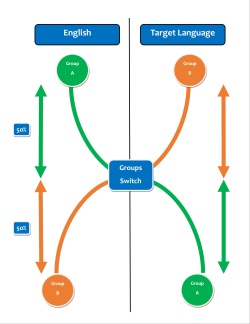 Elementary: Instruction is divided between two high-quality, creative classrooms: one English and one immersion (target language) with fifty percent of the academic day taught in English and fifty percent of the academic day taught in the target language. Students enjoy the advantage of two caring, highly qualified teachers. The English-speaking teacher uses half of the instructional day to teach English Language Arts, literacy, and content area support. The immersion teacher uses the other half of the day to teach math, science, social studies, and target language literacy. Teachers are trained in the use of instructional strategies that promote language learning and academic development.
Elementary: Instruction is divided between two high-quality, creative classrooms: one English and one immersion (target language) with fifty percent of the academic day taught in English and fifty percent of the academic day taught in the target language. Students enjoy the advantage of two caring, highly qualified teachers. The English-speaking teacher uses half of the instructional day to teach English Language Arts, literacy, and content area support. The immersion teacher uses the other half of the day to teach math, science, social studies, and target language literacy. Teachers are trained in the use of instructional strategies that promote language learning and academic development.
What skills/content do the students learn in the DLI program?
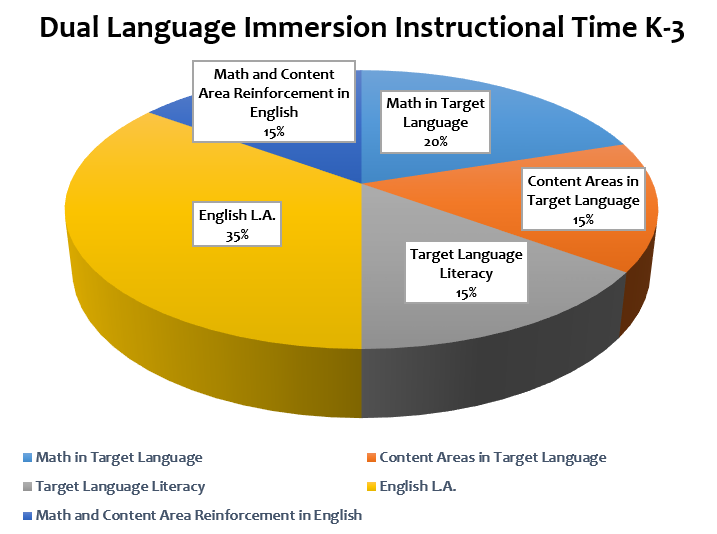
Students in the Dual Immersion Program learn the concepts and skills for the various subject areas at the same time that they develop the ability to read, write, speak, and listen in another language. Students learn the same concepts and skills for the various subject areas as their grade-level peers at the same time that they develop the ability to read, write, speak, and listen in another language. Students receive math, science, and social studies instruction in a target language, such as Spanish, French, or Chinese.
What are the benefits of Dual Language Immersion?
Language Skills: Students achieve high proficiency in the immersion language. Immersion students become bilingual and biliterate.
Improved Performance on Standardized Tests: Immersion students perform as well as or better than non-immersion students on standardized tests of English and math administered in English.
Enhanced Cognitive Skills: Immersion students typically develop greater cognitive flexibility, demonstrating increased attention control, better memory, and superior problem-solving skills as well as an enhanced understanding of their primary language.
Increased Cultural Sensitivity: Immersion students are more aware of and show more positive attitudes towards other cultures and an appreciation of other people.
Long Term Benefits: Immersion students are better prepared for the global community and job markets where a second language is an asset.
Language Academies - High School (9-12)
DLI programs at the high school level will continue to grow one grade level at a time every school year as students move from 9th through 12th grade. Please see the chart below for a list of current schools offering the Dual Immersion program, the language of the program, and the grade levels available for each academic year.
| School | Grades |
| 9 - 12 | |
 |
9 - 12 |
a
Curriculum Elements
Language Proficiency
Cobb County World Language Program courses are designed to assist the students' development of language and intercultural skills. Each course has set learning targets based on ACTFL's language proficiency standards and NCSSFL-ACTFL Can Do Statements. ACTFL standards goal areas are: Communication, Cultures, Connections, Comparisons, and Communities.
Communication
This is the main area of the standards and in which we based a great part of our course program. There are three modes within the communication standards, Interpersonal, Presentational, and Interpretive. Use the links below to learn more about the language domains and sublevels for each mode.
| MODES | |||||
| LEVELS | |||||
| Novice | 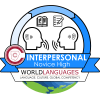 |
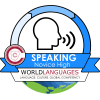 |
 |
 |
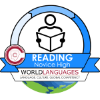 |
| Intermediate | 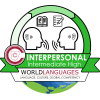 |
 |
 |
 |
 |
| Advanced | 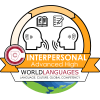 |
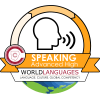 |
 |
 |
 |
Culture
The study of culture and language is strongly interconnected. Students use the language to investigate and interact properly with the practices, perspectives, and products of the various cultures.
| LEVELS | |||
| Novice |  |
 |
 |
| Intermediate |  |
 |
 |
| Advanced |  |
 |
 |
For more information and resources about language proficiency go to the American Council for Teachers of Foreign Languages (ACTFL) at: https://www.actfl.org/
Page 8 of 8
















 Cobb's District Collaborative Communities allow every Cobb World Language teacher to actively engage in participating in a content specific Collaborative Community no matter of their school location. Teachers are highly encouraged to participate in one of the district wide language specific CCCs based on your language and level. Each language team has a common repository of resources, chat platform, and a meeting platform. This resource allows teachers to communicate synchonously through Skype or asynchronously via chat.
Cobb's District Collaborative Communities allow every Cobb World Language teacher to actively engage in participating in a content specific Collaborative Community no matter of their school location. Teachers are highly encouraged to participate in one of the district wide language specific CCCs based on your language and level. Each language team has a common repository of resources, chat platform, and a meeting platform. This resource allows teachers to communicate synchonously through Skype or asynchronously via chat.